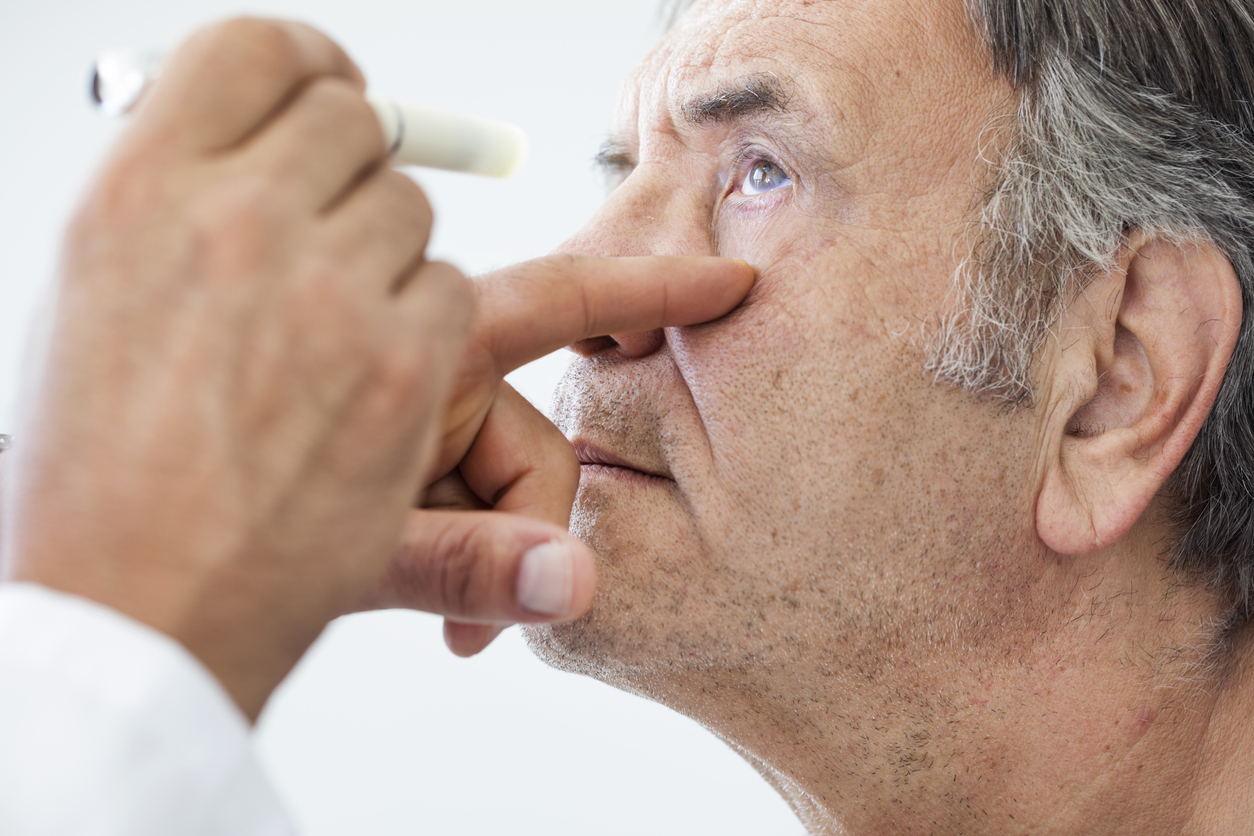Glaucoma: Critical Symptoms to Look Our For

Glaucoma affects a growing number of Americans every year, but it can be difficult to detect. Here’s what you need to know about the different types of glaucoma, the signs and symptoms of each, and the available treatment options.
If you’re worried about glaucoma, you’re not alone. More than two million Americans currently have glaucoma, and the number of people who experience its effects is expected to rise to 3.3 million by 2020.
In many cases, the symptoms of glaucoma manifest so gradually that patients do not realize something is wrong until permanent damage has already occurred. Frequently referred to as “the silent thief of sight,” glaucoma is the second-leading cause of blindness in both the U.S. and the world at large. The best medicine, therefore, is prevention – by getting regular eye exams, patients can begin treatment as soon as possible when symptoms arise.
What Is Glaucoma, and What Causes It?
Glaucoma is a group of conditions wherein the optical nerve deteriorates, most often due to an accumulation of excess fluid (aqueous humor) beneath the eye’s surface. This fluid creates the increased intraocular pressure commonly associated with glaucoma. This accumulation occurs either when the eye produces too much fluid or when fluid in the eye does not drain properly.
The increased pressure damages the optic nerve, compromising its ability to transmit visual data to the brain. As a result, nerves begin to die, causing vision impairment that usually begins as subtle patchiness in peripheral and central vision, but can progress to tunnel vision or complete blindness if left untreated.
While there is no cure for glaucoma, you can facilitate an early diagnosis by educating yourself about the disease and getting regular eye exams. These preemptive measures enable you to access treatment experts who can ameliorate certain symptoms, teach you how to manage the disease, and prescribe the appropriate medical or surgical intervention(s) before glaucoma severely compromises your ability to see.
What Are the Different Categories of Glaucoma?
Open-Angle Glaucoma
The more common form of the disease, open-angle glaucoma occurs when the trabecular meshwork (or “drain angle”) that siphons away aqueous humor as the eye produces new fluid does not function properly.
Types of open-angle glaucoma include:
- Primary open-angle glaucoma, which, other than causing incremental reductions in peripheral vision, is asymptomatic.
- Normal-tension glaucoma, which causes blindspots or other signs of optic nerve deterioration in people who have normal intraocular pressure.
- Pigmentary glaucoma, which develops in response to pigment from the iris that has loosened and clogged the drain angle.
- Secondary glaucoma, which is chronic glaucoma that follows an eye injury or infection.
- And congenital glaucoma, which is present in children who have inherited structurally malformed or otherwise defective drainage systems.
With these variants of glaucoma, the eye fails to fully drain, producing more aqueous humor than flows out. This imbalance leads to the excess of fluid that exerts damaging pressure on the optic nerve.
Because this excess accumulates over time, open-angle glaucoma progresses gradually, making the condition easy for the average person to miss. For this reason, regular eye exams are necessary to identify optical nerve damage in the early stages of glaucoma. If you begin to notice blind spots in your peripheral or central vision, you should go to your doctor as soon as possible.
Angle-Closure Glaucoma
In contrast to open-angle glaucoma, angle-closure glaucoma (also known as closed-angle or narrow-angle glaucoma) exhibits sudden and severe symptoms. It develops when the iris is unusually close to the drain angle and begins to block it partially or entirely, causing eye pressure to skyrocket. If you have this form of glaucoma, you may experience halos or rainbow rings around lights, eye redness, blurry vision, extreme pain in your eyes or head, nausea, or vomiting.
Angle-closure glaucoma manifests in attacks of these acute symptoms and can cause blindness. Acute-closure glaucoma often rises to the level of a medical emergency, and patients experiencing its symptoms should seek treatment immediately, either at an emergency room or their ophthalmologist’s office.
Who Is at Risk?
Anyone can develop glaucoma at any age, but the disease tends to affect people in some demographic groups more than others. You are at increased risk of glaucoma if you are over 40 years old, have a family history of glaucoma, have high intraocular pressure, are black, Asian, or Hispanic, have certain non-ocular health problems (particularly cardiovascular conditions), have other eye issues like thin corneas, myopia, or hyperopia, or have experienced ocular trauma.
How Can I Treat Glaucoma?
Treatment options for glaucoma include medicated eye drops, laser surgery, and microsurgery. Eye drops reduce eye pressure by either increasing drainage or decreasing fluid generation. Laser surgery is less invasive than microsurgery and can increase drainage in cases of open-angle glaucoma or unblock the drain angle in cases of angle-closure glaucoma.
Microsurgery is a more intensive surgical option, but may be necessary for patients who have malformed drainage systems. When doctors perform microsurgeries, they create new drainage channels — sometimes by implanting a tube — through which fluid can flow out of the eye.
While these treatments are all safe and effective, medications can have side effects, and every surgery involves some level of risk. If you have glaucoma, talk to your eye doctor to determine which treatment option is best for your stage and type of the disease.
How Can I Make an Appointment?
If you experience any of the symptoms described above, visit your eye doctor for a full consultation and eye exam. Schedule an appointment with ICON Eyecare online or by phone to learn more about glaucoma, discuss your personal risk factors, or assess your eye health.
[DISPLAY_ULTIMATE_SOCIAL_ICONS]








